View and Edit your Results
Find the following sections below:
View and Filter your Results
You can view your results once you have executed a rule. You can access them by clicking on the results icon at the top right of the Execution Steps slide-out.

You can also access your results from the card or row of a rule on its project page in the bottom right corner if you have already executed this rule.

In the following image you can see that there are unresolved results for an alert.

If a rule has been run by another user or schedule while you are viewing its results, you will be notified that there may have been changes. The results will then be refreshed so you can always view the latest updated records.
What are Resolved and Unresolved Results?
When a record is unresolved, it has been included in the result set created by the rule’s query. You can edit the custom fields of unresolved results following our guide below.
A resolved result means that at some point the record was available in the results for the provided query (as an unresolved result), however changes to the data have meant it is no longer included within the queries filters and so, is considered to be dealt with.
You cannot edit the custom fields of resolved results, as your query filters out records that are not relevant. So if the issue causing a record was solved, it will no longer be included in the results of the query and so, the new version of this record will not be able to be edited.
What is the Record Age?
You will be able to find the age of a record and whether it has been added to the results with the last execution of a rule on this page. This is generated by Loome and will be present on the results page of any executed rule.
The record age will note how long ago an individual record was added to the results of this rule. When you run a rule, results will first be ordered by record age, to display any new records, and then by the key column by default.
New record will state whether a row was added in the most recent execution of a rule.
In the image below, all rows of this rule were added when this rule was last run. Loome also notes when they were last added.
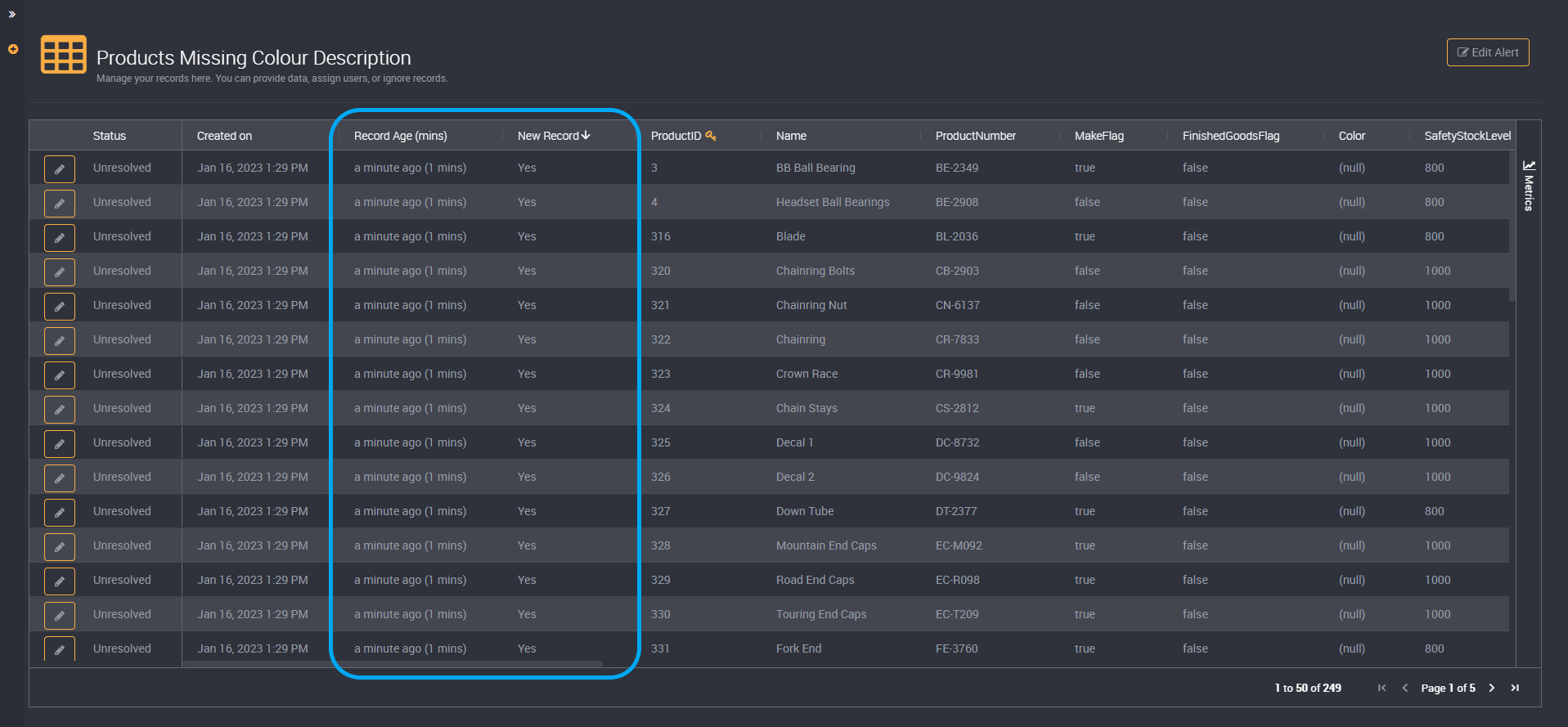
In the next example, there has been three new records added.
The column New Record will state which rows have been added in the last execution of a rule.

You can use the Record Age column in communication rules to send notifications when a record has remained unresolved for a long period of time. Learn how to create a condition for this scenario in our guide here.
Load More Results
If your rule contains more than 20,000 records, you can load more results using the Load More button at the top right of this results page to load another 20,000 records at a time.


Pagination
You can use pagination to navigate through your data. You can also find the total number of records that have been currently loaded beside the page navigation.
You can navigate the pages of your results using the arrows at the bottom right of the results table.
You can progress to the end or start of the loaded data set or navigate page by page.

Metrics
The metrics of the rule’s records can be found in a slideout on the right of the results table. It will show how many records belong to each status. The metrics displayed will be all existing statuses of the records in your data set.

It will also be available as a table in your target connection under ‘LMProject Number.LMRule Number__Metrics’.

How to Apply Slicers
You can select slicers using the icon with three bars that appears when you hover over each column.
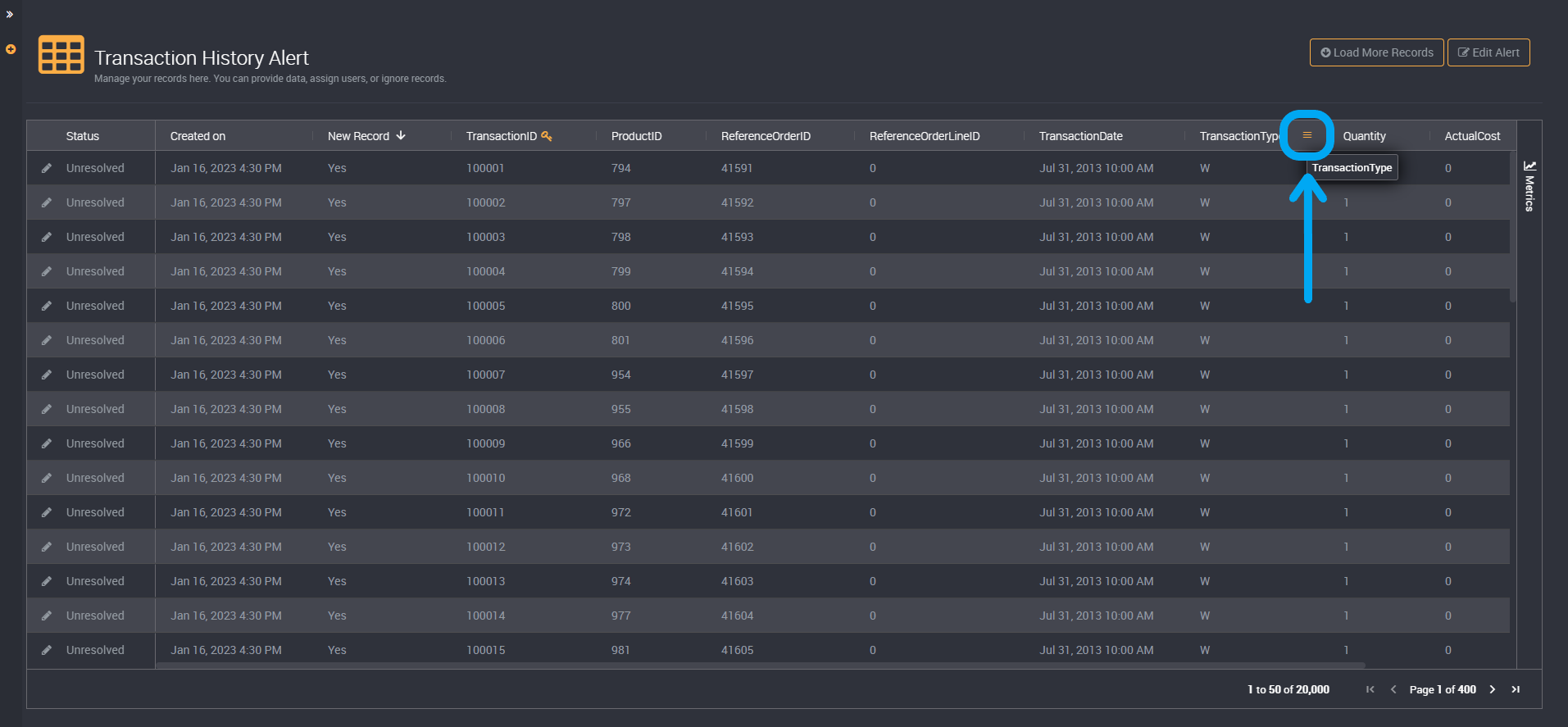
You can click on the slicer icon here to choose what you would like to see in the results.

The slicers that are available depend on your data. A column will not be available as a slicer:
- If there are no values in a column and all fields are empty
- If your results do not vary and each row displays the same data
The column will not be available as a slicer unless data in that column has changed. For example, if all results are unresolved you will not be able to filter on resolved and unresolved rows until an issue has been solved for at least one row. The resolved rows will then be seen when the ‘Resolved’ slicer is then applied.
To apply a slicer, click on a checkbox or select a condition in a number slicer. The moment you click on a slicer, it will be applied to the currently loaded results.
If you have chosen a condition, you can then add the value.
For example, if you wanted to display results with an ID greater than and equal to 105000, you can select ‘greater than and equal to’ as the condition and ‘105000’ as the value.
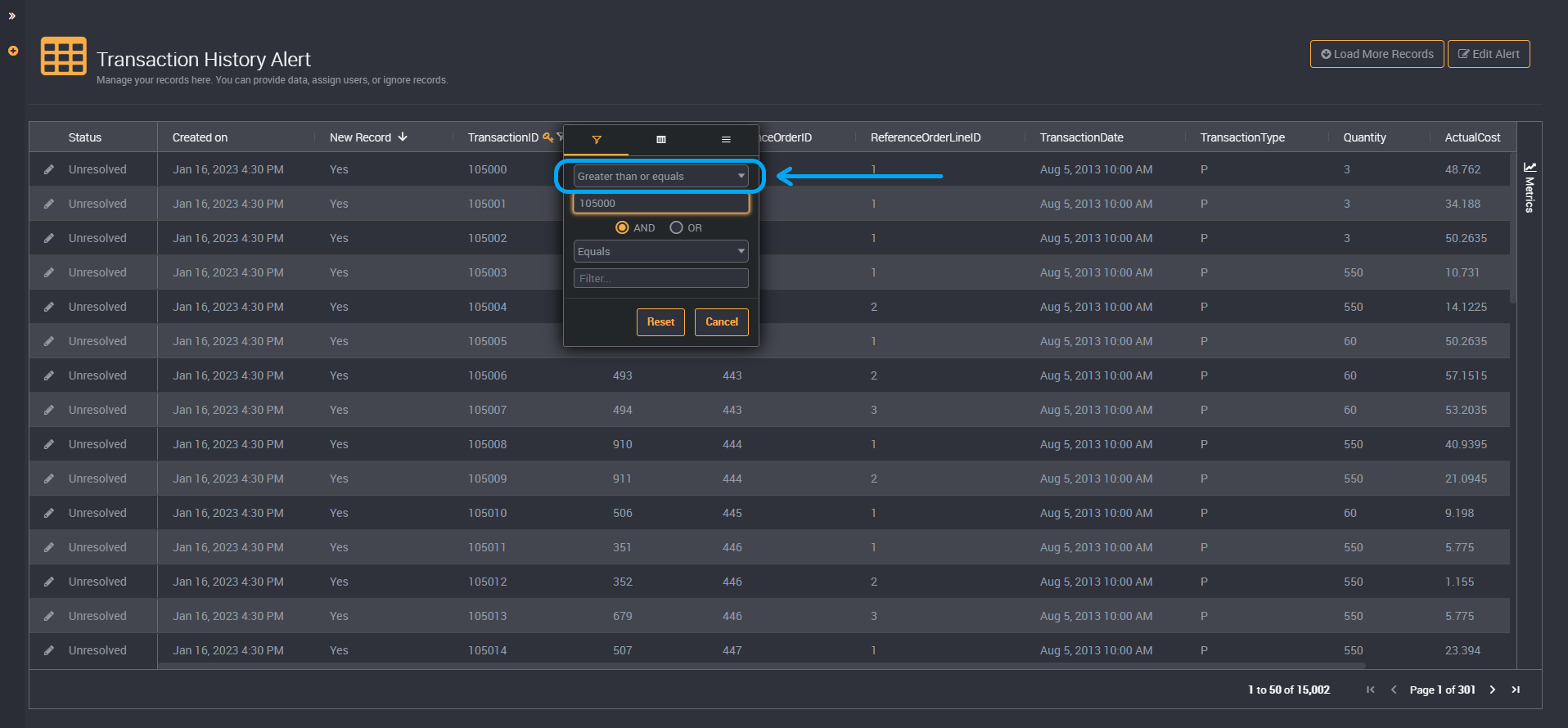
You can then add another condition as a slicer, by choosing whether it will be ‘AND’ or ‘OR’ and providing the condition and filter value below.
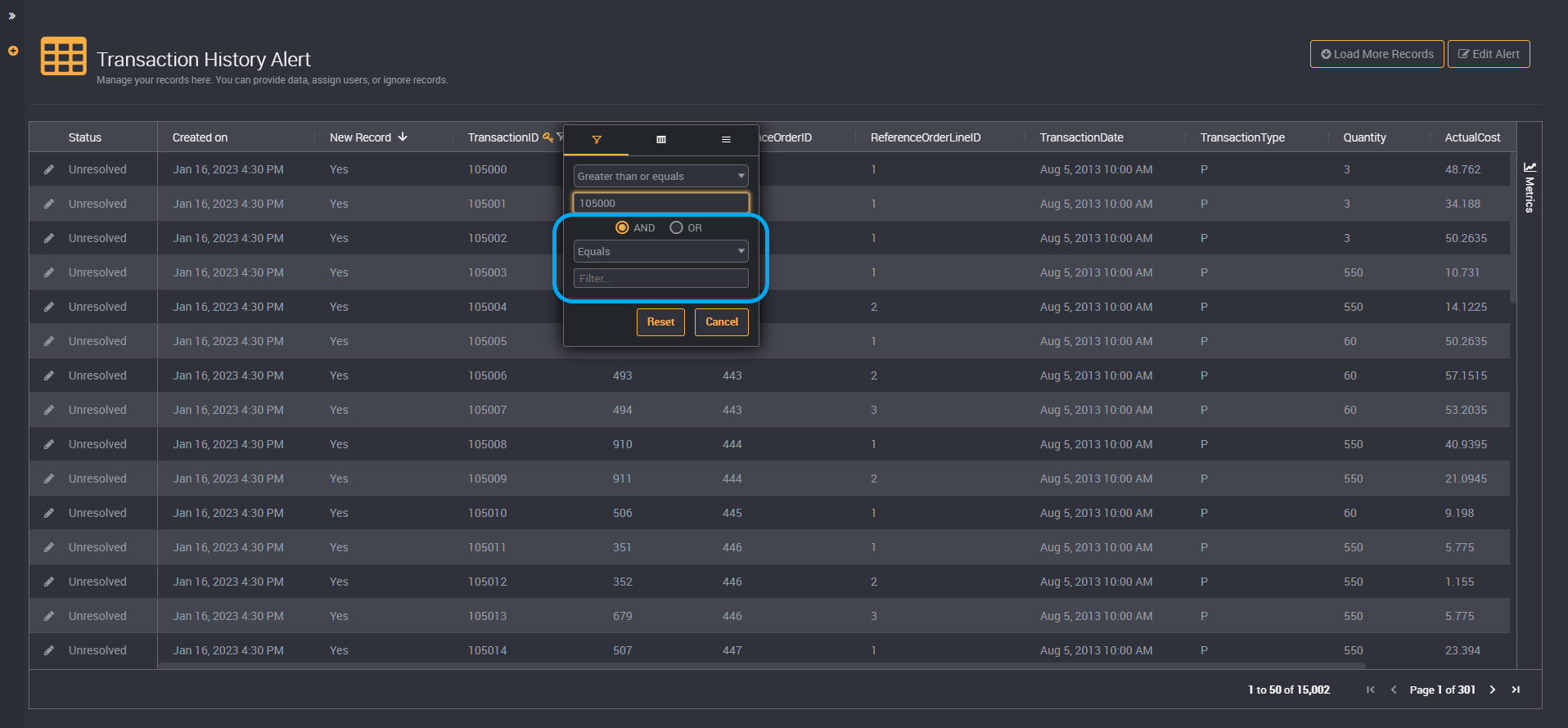
To cancel all applied slicers, click on Cancel.
Or to reset all applied slicers, click on Reset.

You can watch the following gif to see an overview of filters and how to modify your results table.
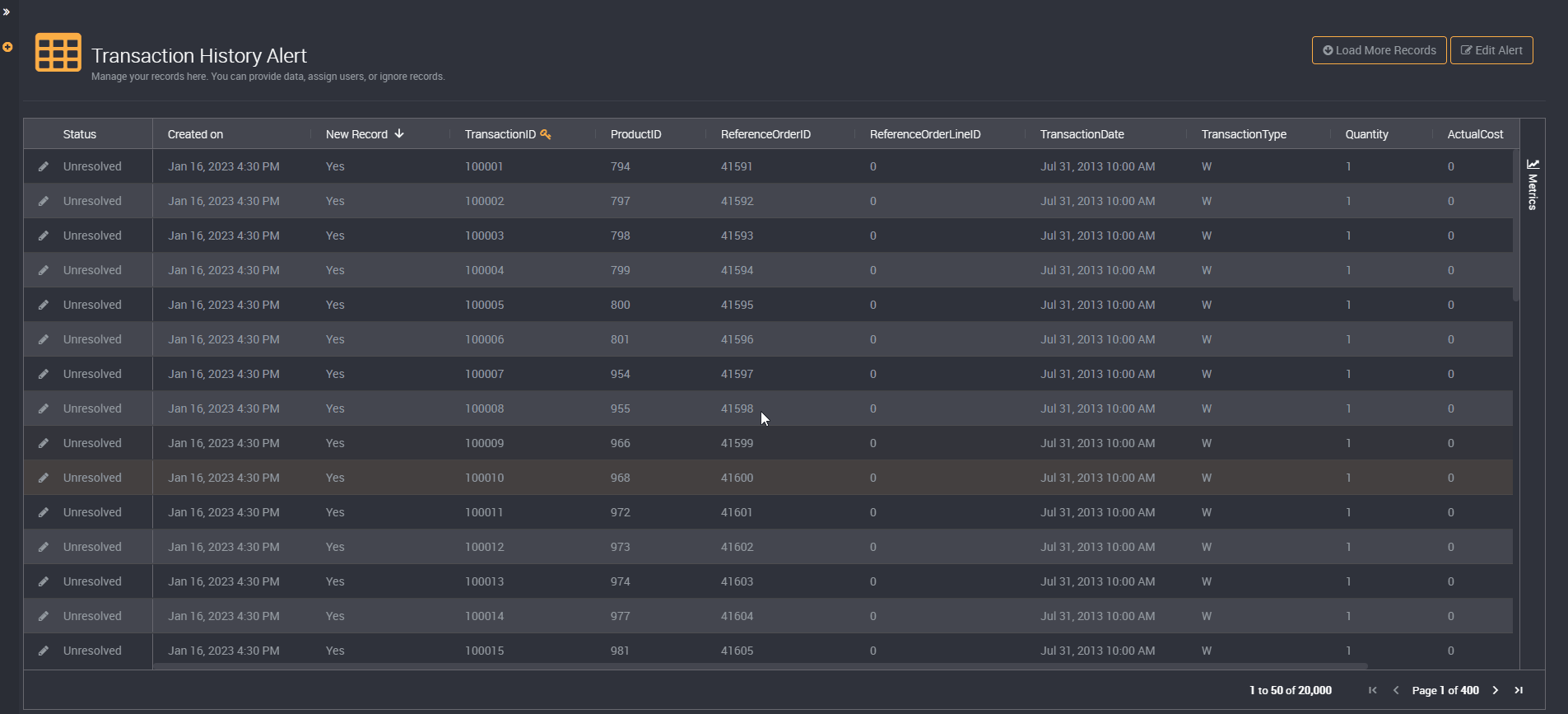
Sorting
You can also sort on any column using the arrows beside each column name.

By default, the results will load the records of the default status first. So for example, if you have 100,000 records with 40,000 ‘Active’ records and ‘Active’ is the default status, it will load all 40,000 ‘Active’ records before the 60,000 ‘Inactive’ records. It will then show any new records in this default status first, followed by the other records in the key column order.

Filter by Status
You can also filter your results by status using the slicer button beside the status column heading. It will display the statuses that are available such as resolved or unresolved.
Click on the status you want to see in the results and the table will be updated.
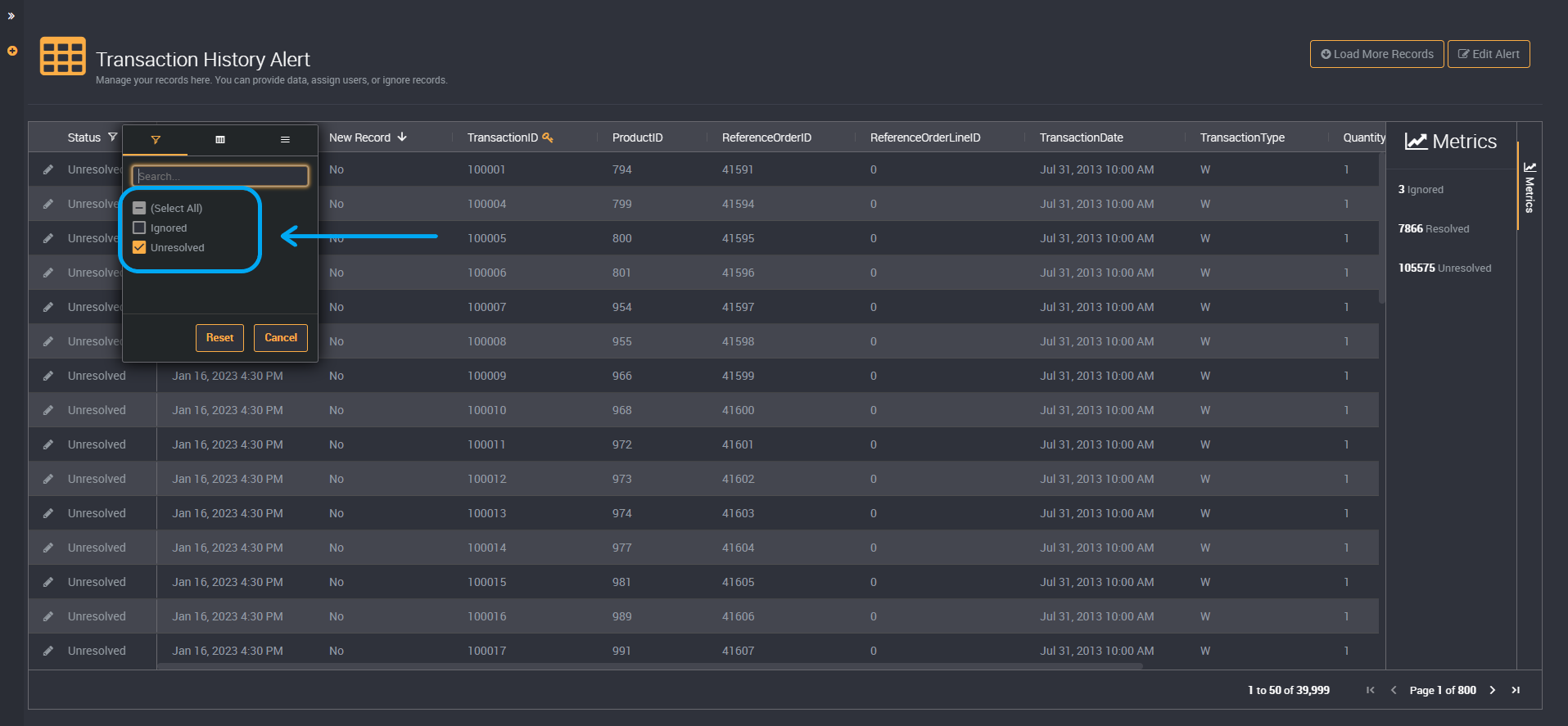
You can also apply all status options using Select All.
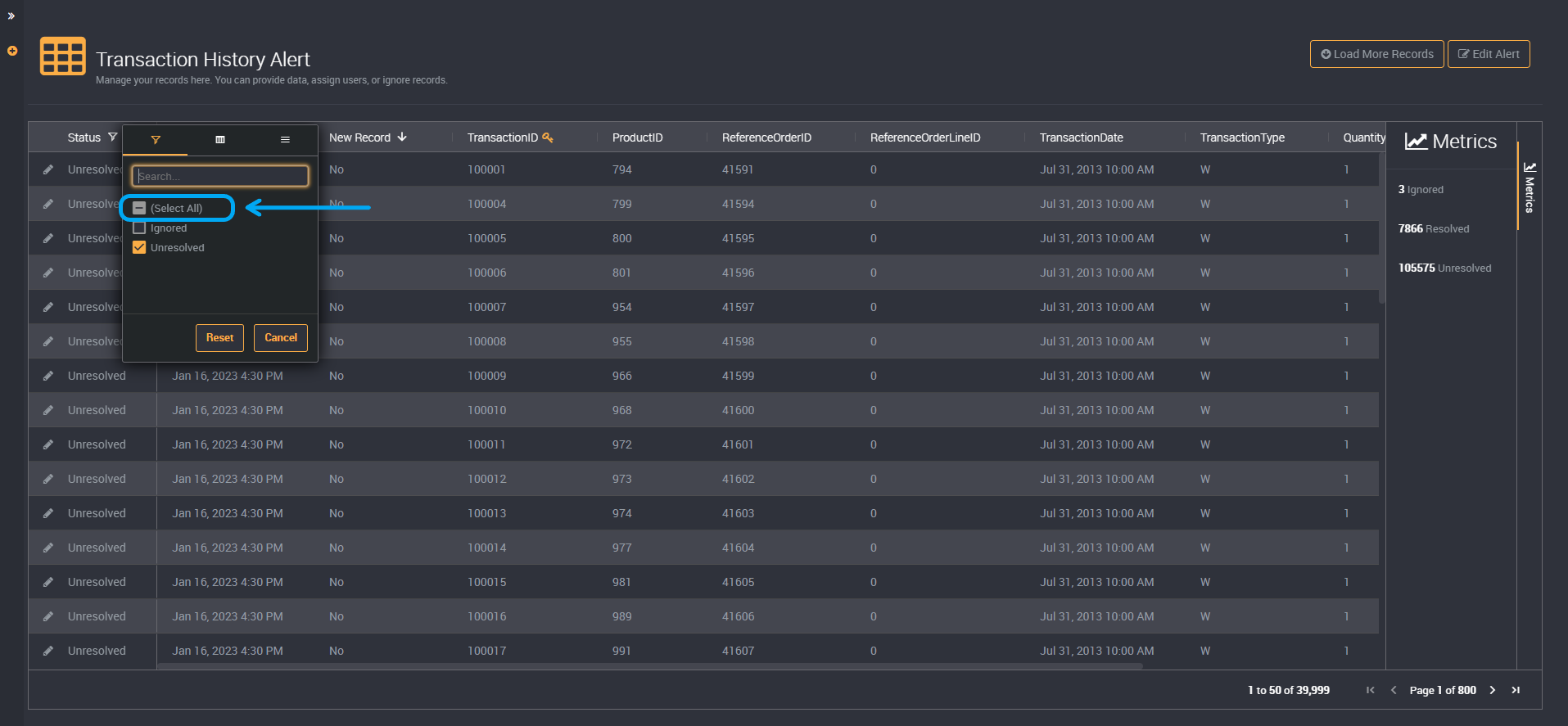
Filter by Ignored Results
You can also view any results that have been ignored by clicking on Ignored.
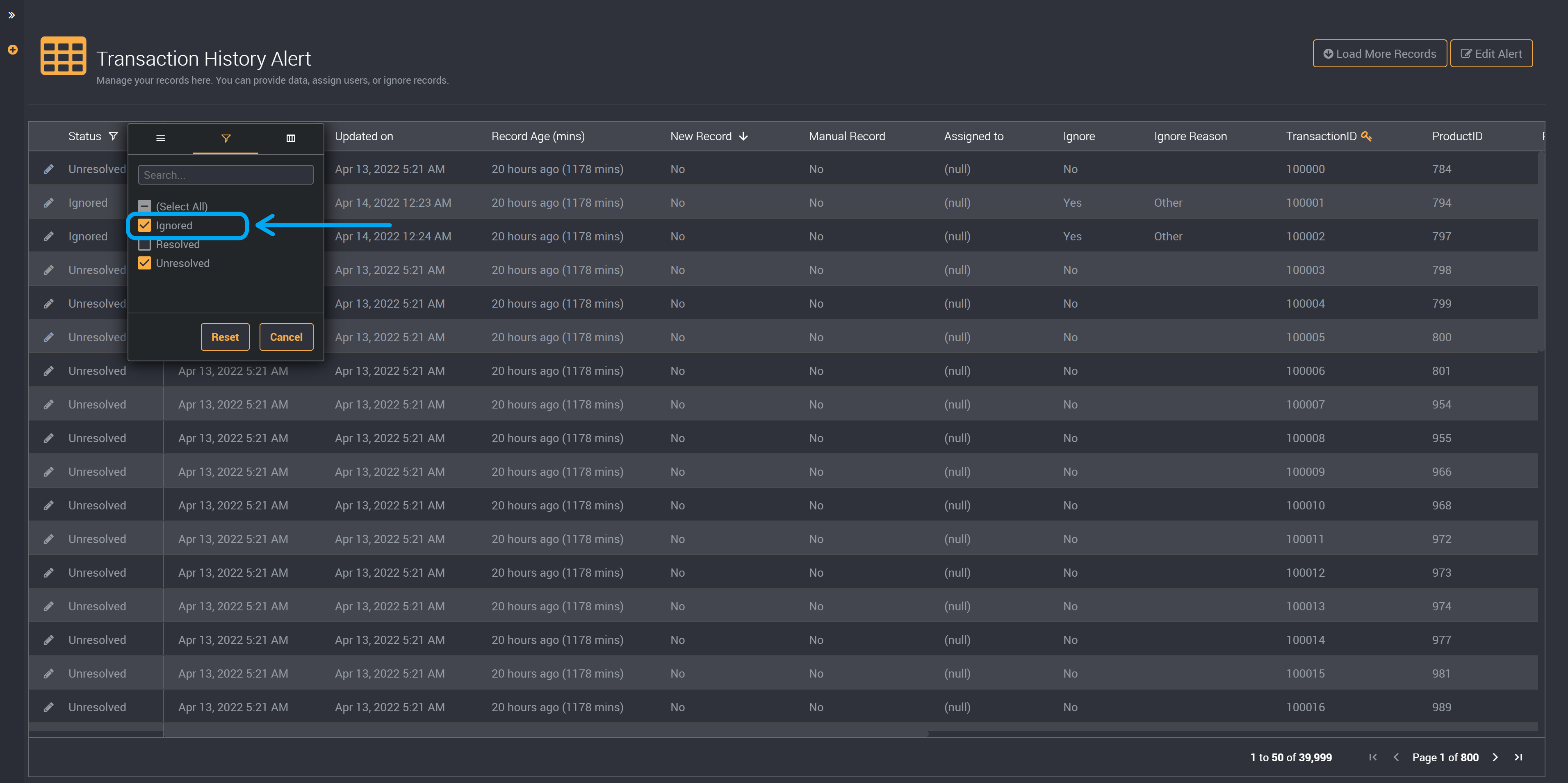
This will also display the reason why a result was ignored.
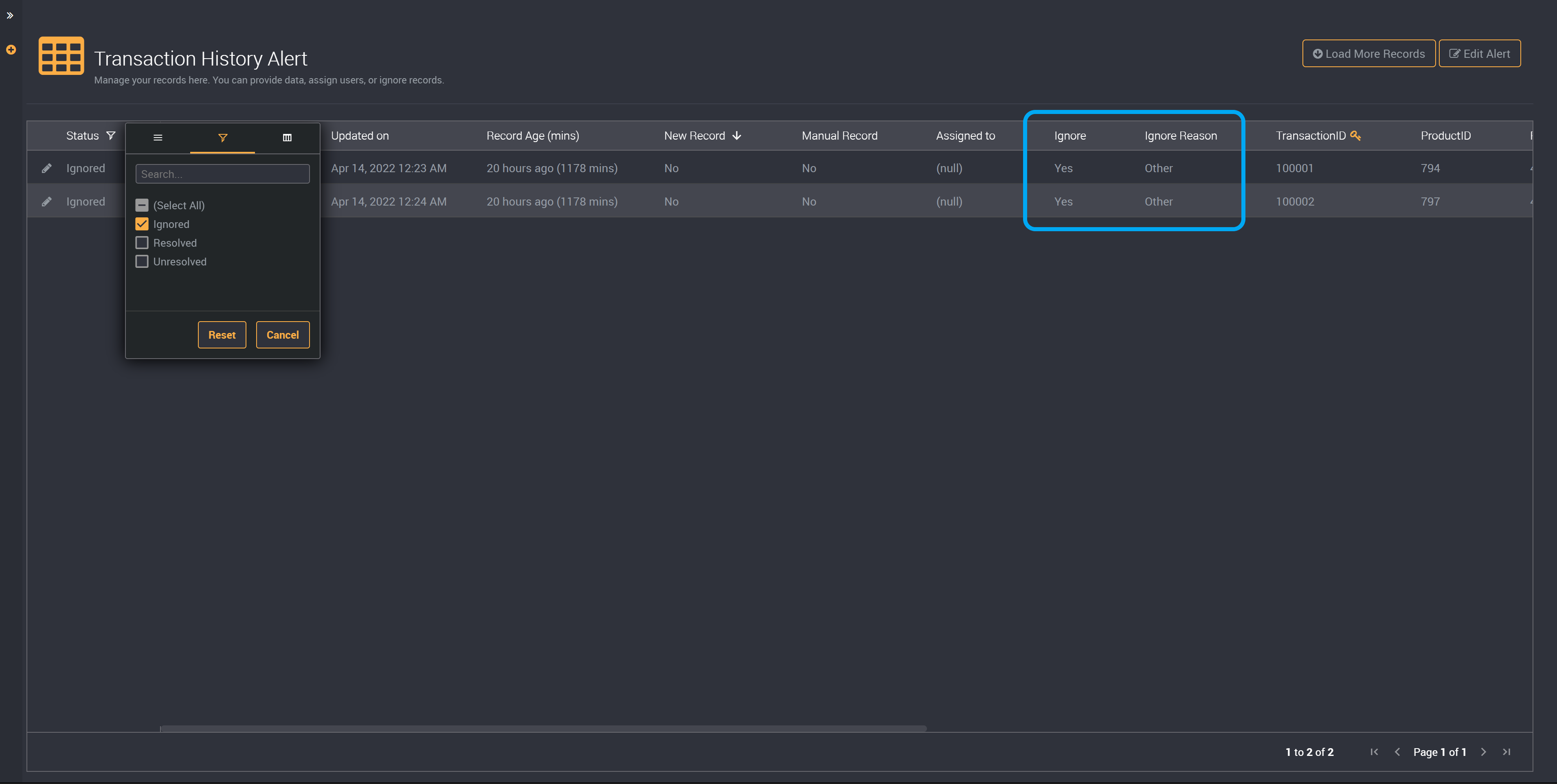
If all results have been resolved or ignored, depending on the default status you have set, the results table will be empty and you will be able to filter between these statuses in the slicers.
Filter by Assigned Users
You can also filter your results by the user a row is assigned to.
Click on the filter of the ‘Assigned User’ column.
Click on the checkbox beside a user and you will be able to view each result assigned to them.
In the image below, I have chosen to filter on unassigned records so I can assign each unassigned row to a user that can resolve that record.

Filter by Date
You can filter a column using a date filter.
Click on the slicers and choose the condition.

Choose the date and time you would like to filter on.

Click Apply.
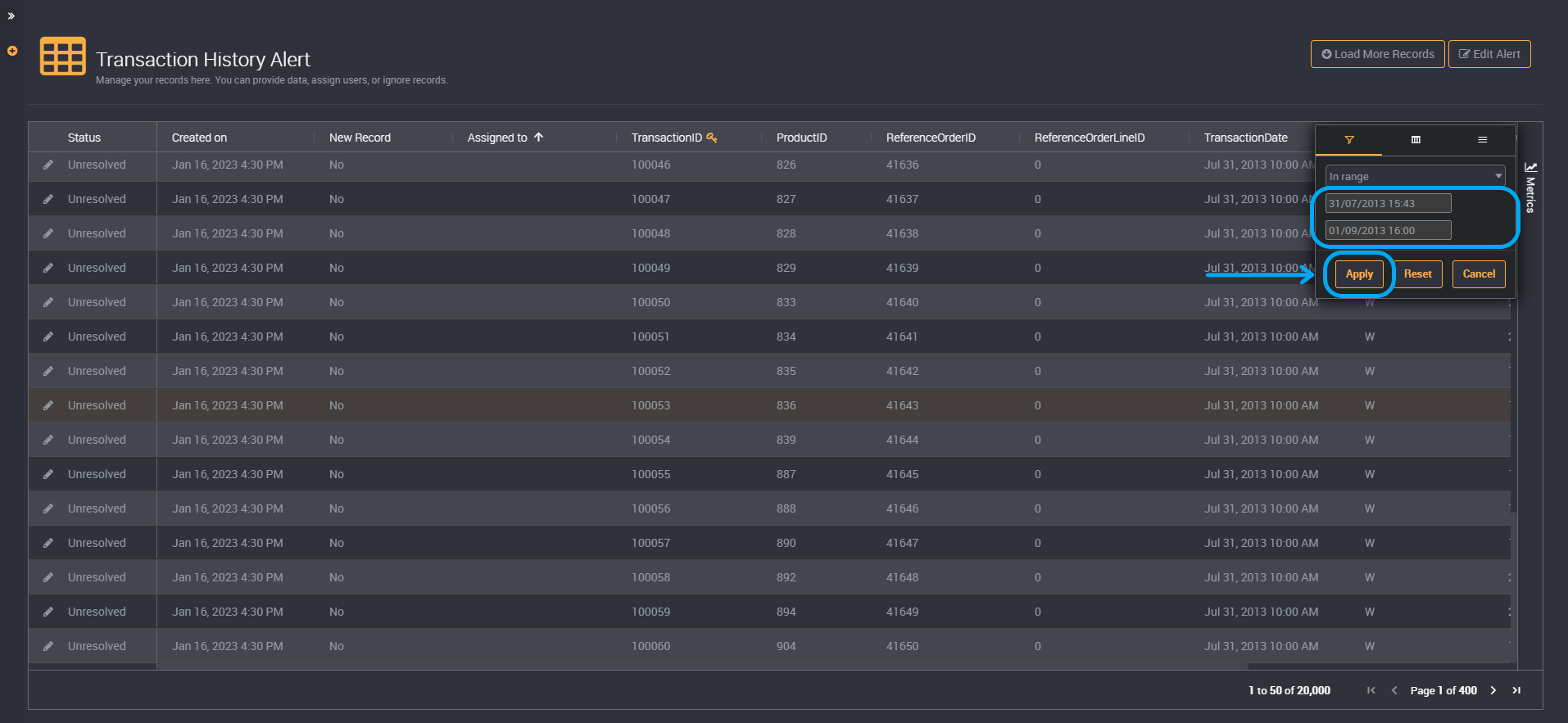
Hide Columns
You can hide columns in your results table.
Click onto the column list and you will see all columns available in the results table.

You can deselect a column to hide it. You can deselect columns until your preferred dataset columns remain.

For example, the columns ‘Created by’ and ‘Updated by’ are hidden by default.
Pin Columns
You can also pin columns to the right or left of the results table. This will move columns and freeze them in place as you scroll through the table.
Click on the slicer button on the column you would like to pin.
Click on Pin columns.
You can choose to either pin it to the left or right of the table.

You can unpin a column by choosing No pin.
In the example below, we have pinned the column ‘TransactionID’.
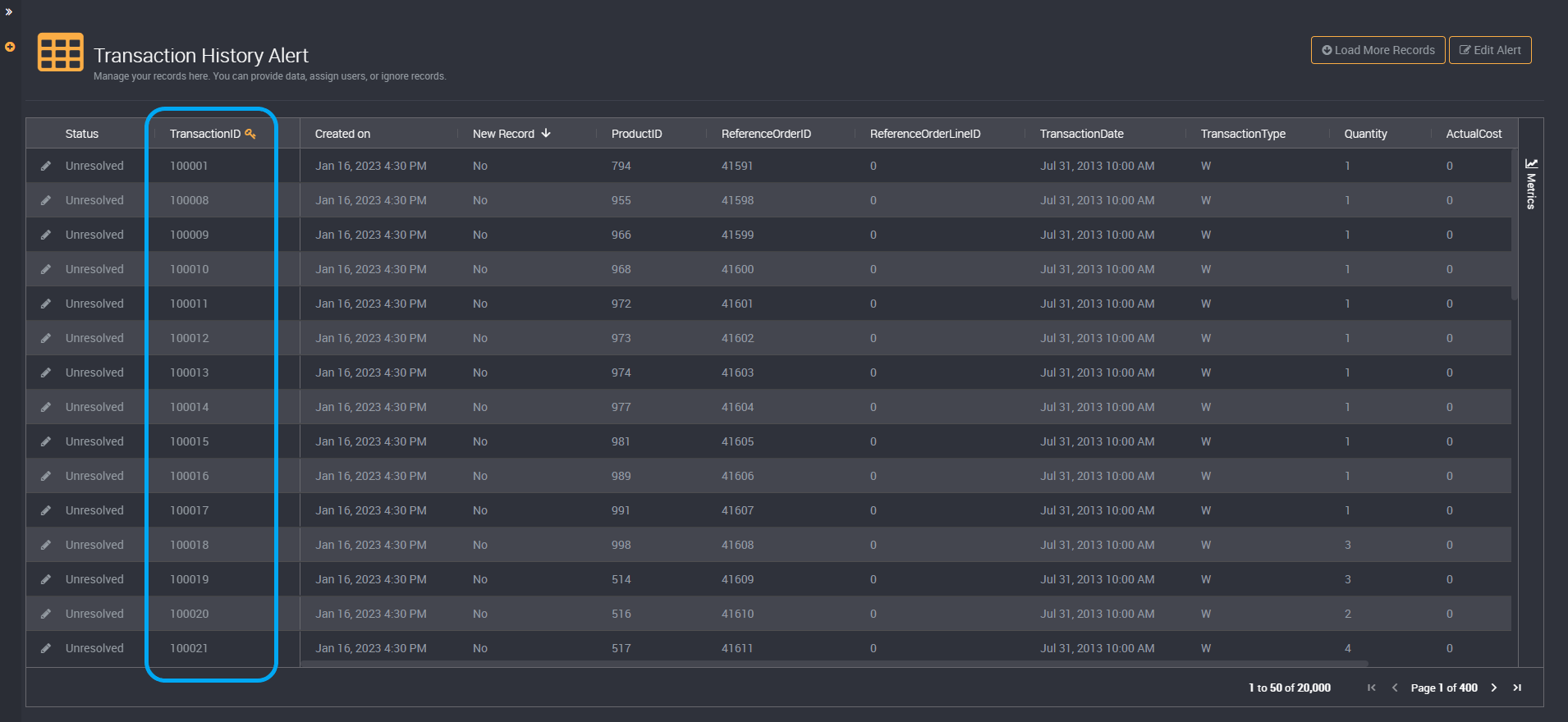

Auto Size Columns
Auto sizing a table or column will minimize unnecessary space taken by that column.
Click on the slicer button on the column you would like to auto size.
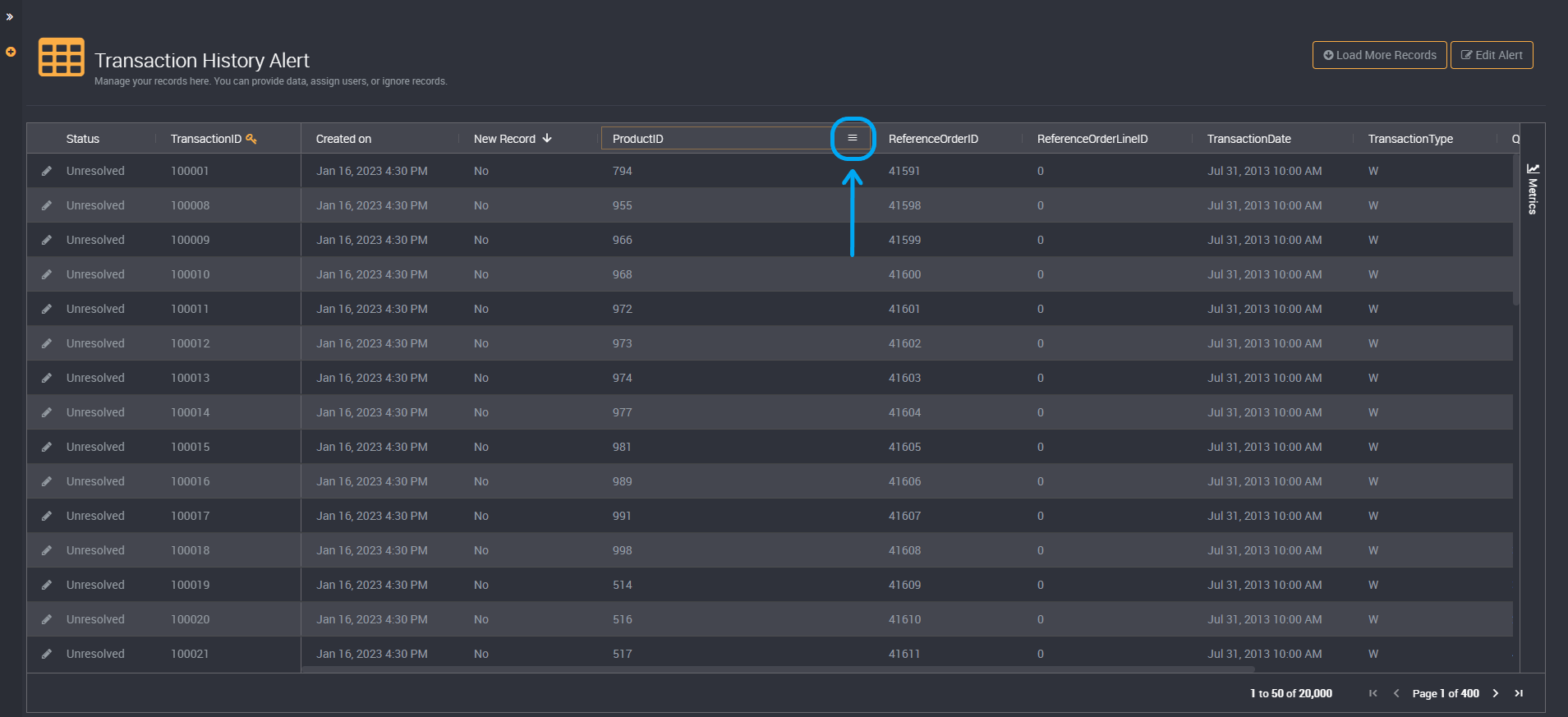
Under the option to pin columns, you can choose to auto size the column you have currently clicked on or you can auto size all columns in the table.

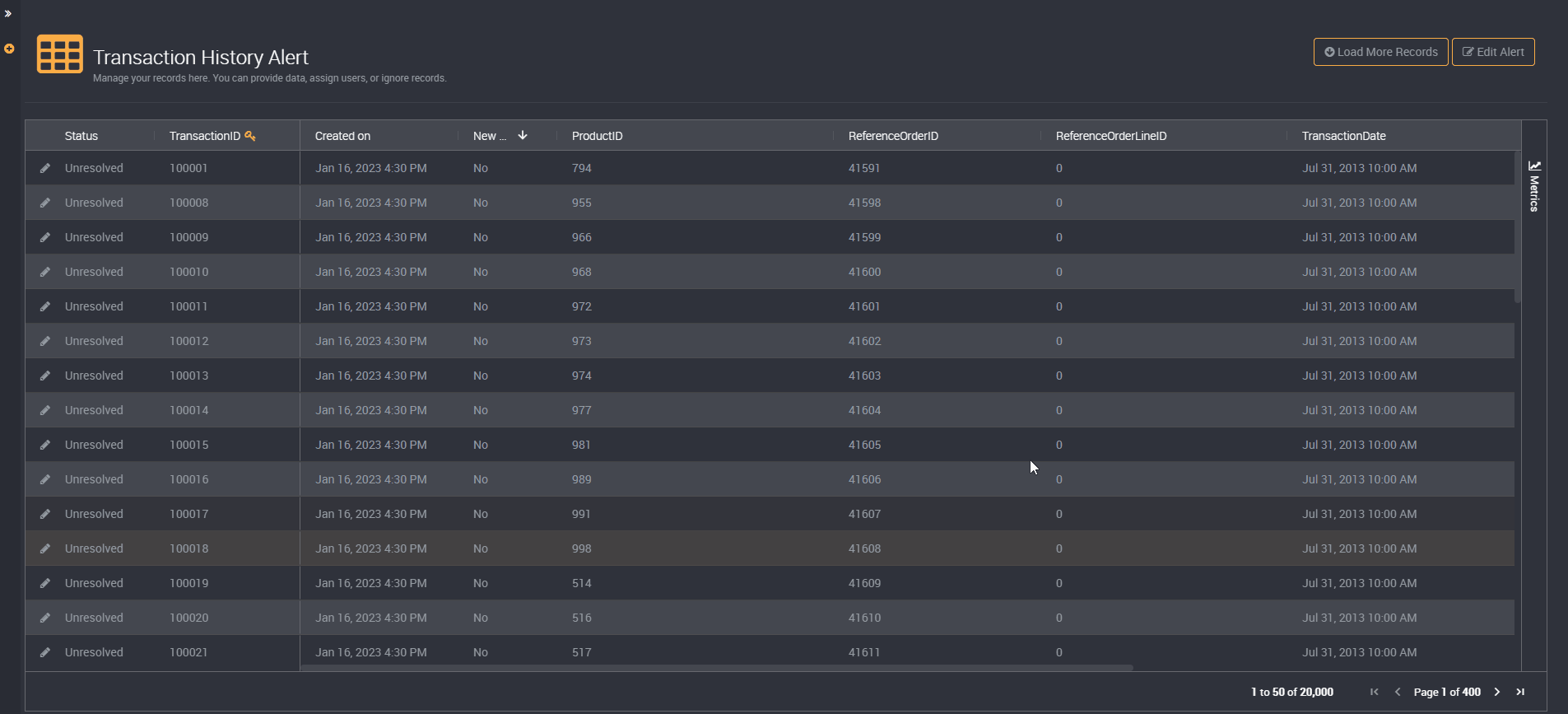
Edit your Results
You can edit your results in a few ways. You can ignore a result, assign a user to a result, and add values to your custom fields.
You can edit a result by clicking on the Edit button on the left of a row.
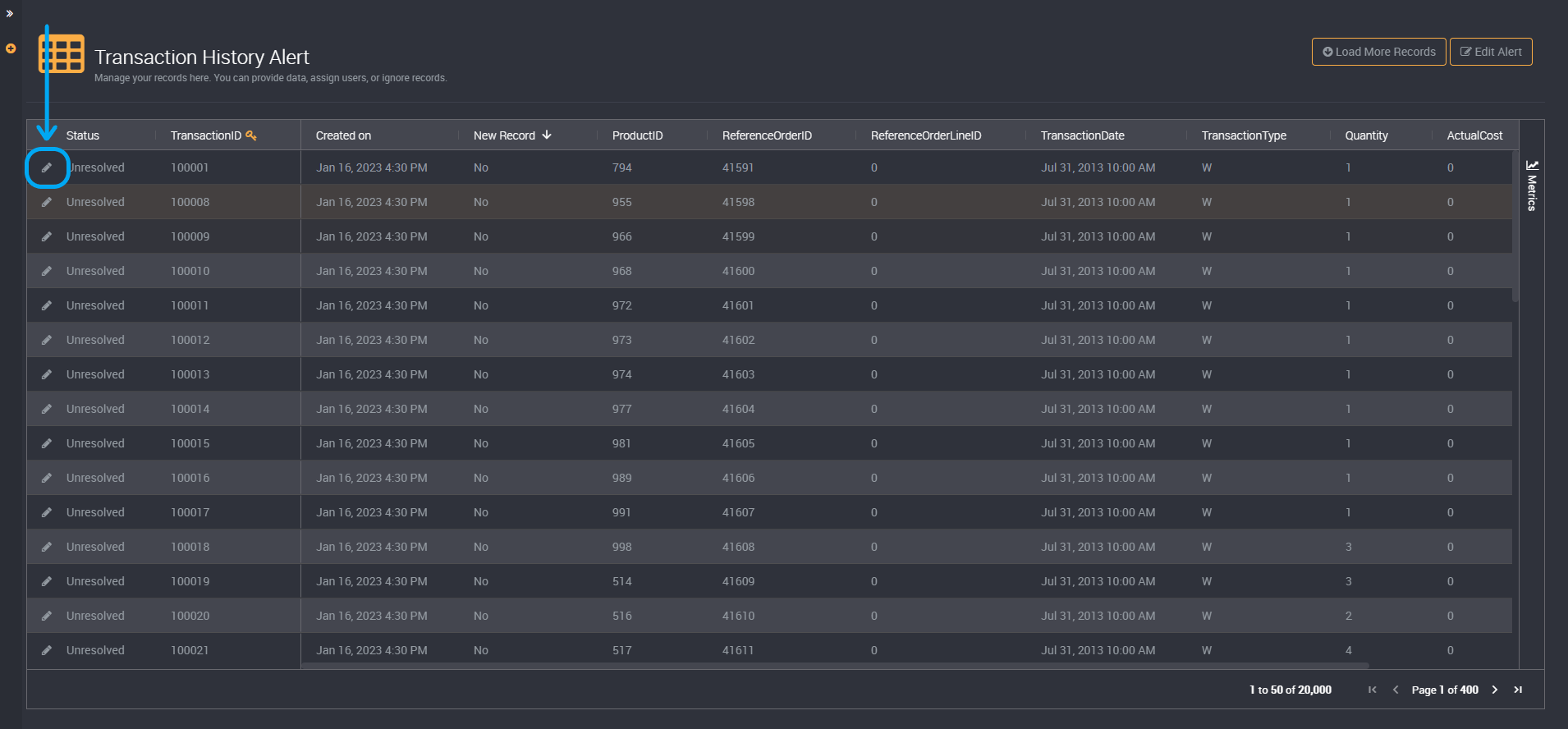
It will display a page where you can edit each custom field, assigned user and whether a result is ignored. You will find that you can only edit fields on the right, and source data that cannot be edited is displayed on the left of the page.
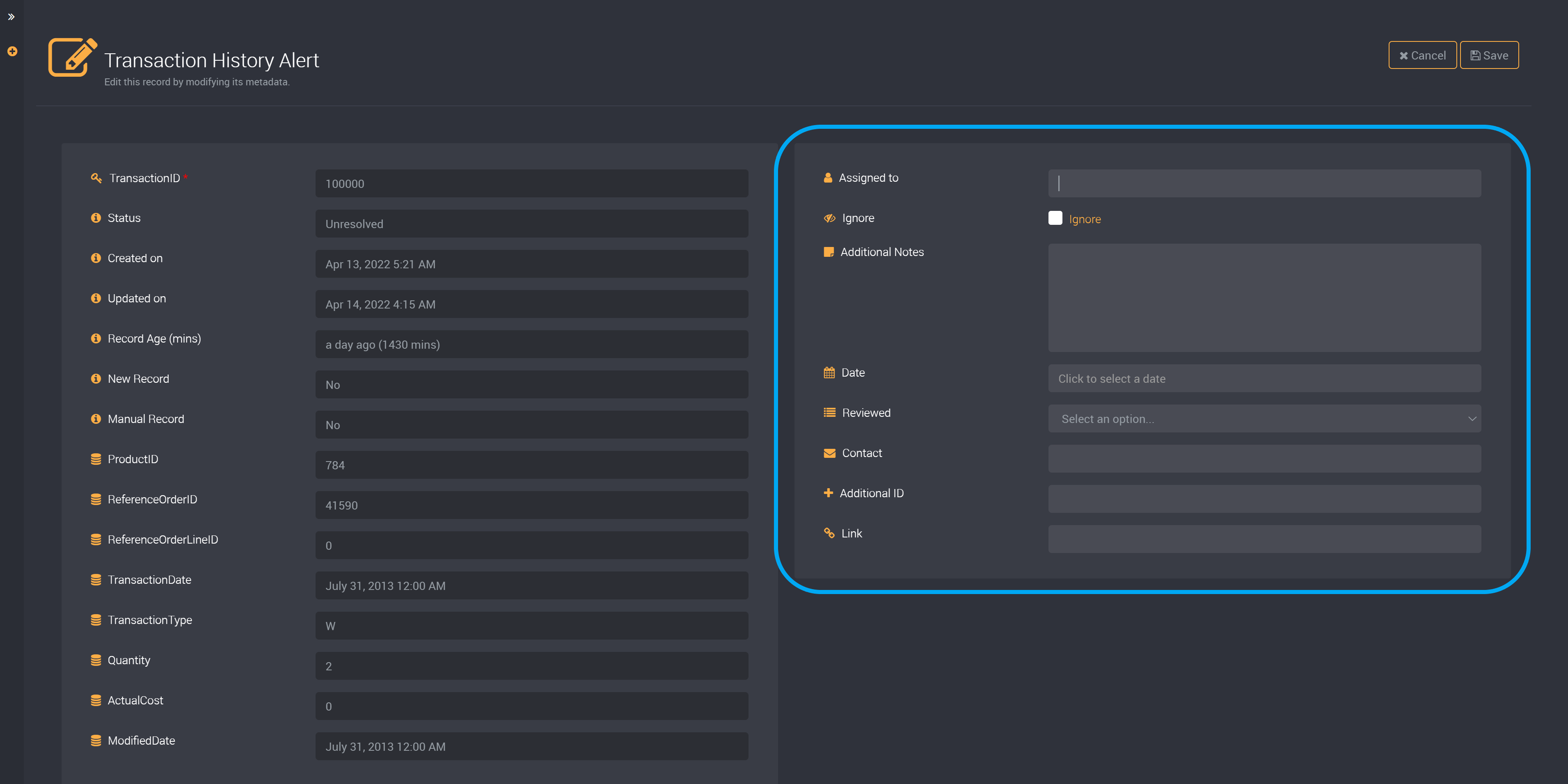
Assign a Result to a User
You can assign a result to a user by clicking on the Edit button on the left of the result and providing their email address in the Assigned to field.
Click on save at the top right, and this assignee will be displayed by its result.

You can assign a row to only one user. Please provide a single email address in a complete email format.
Ignore a Result
You can ignore a row of results by clicking on the Edit button of that row.
Click on the checkbox Ignore.
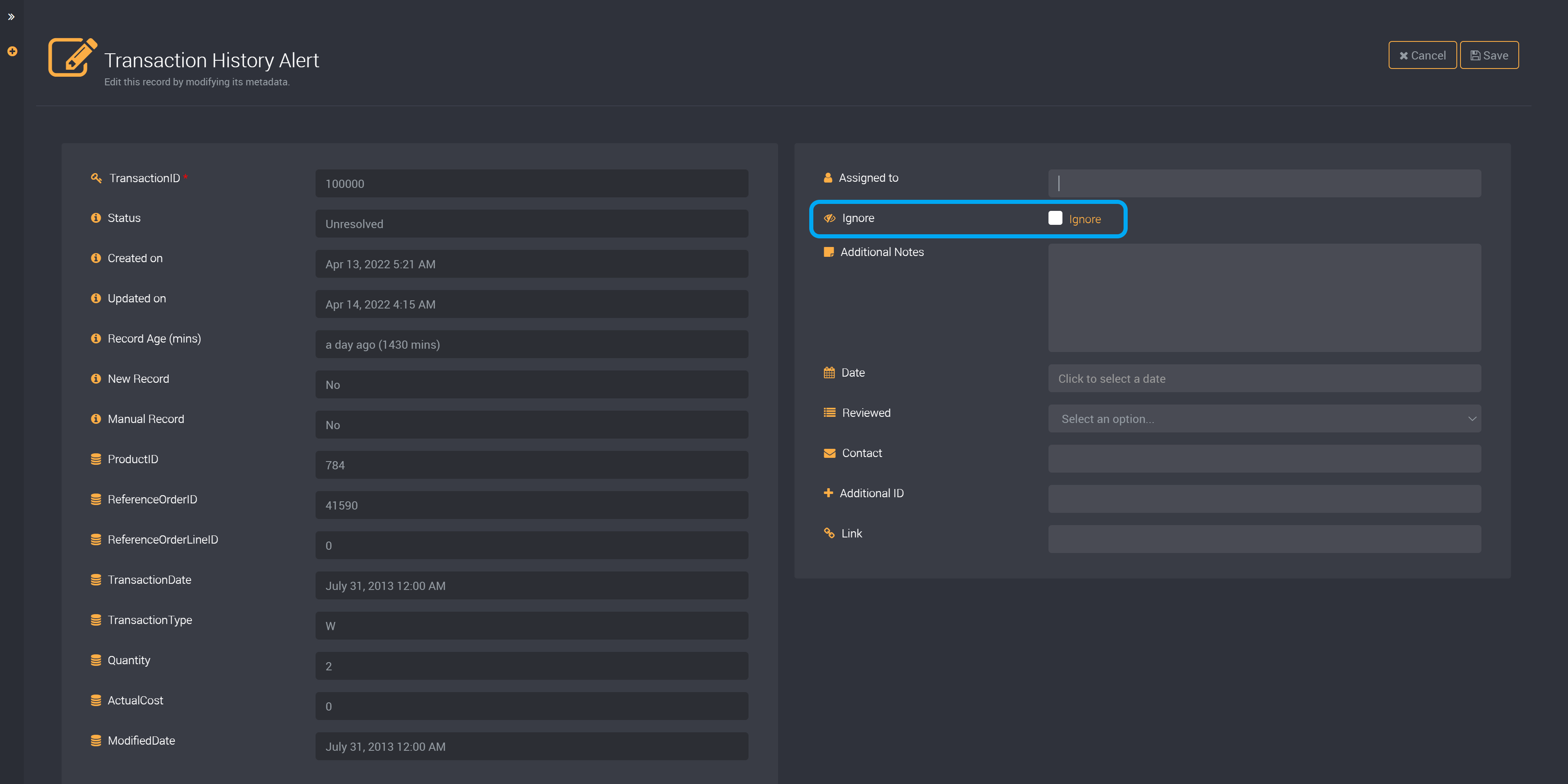
Provide the reason why you want to ignore this row.
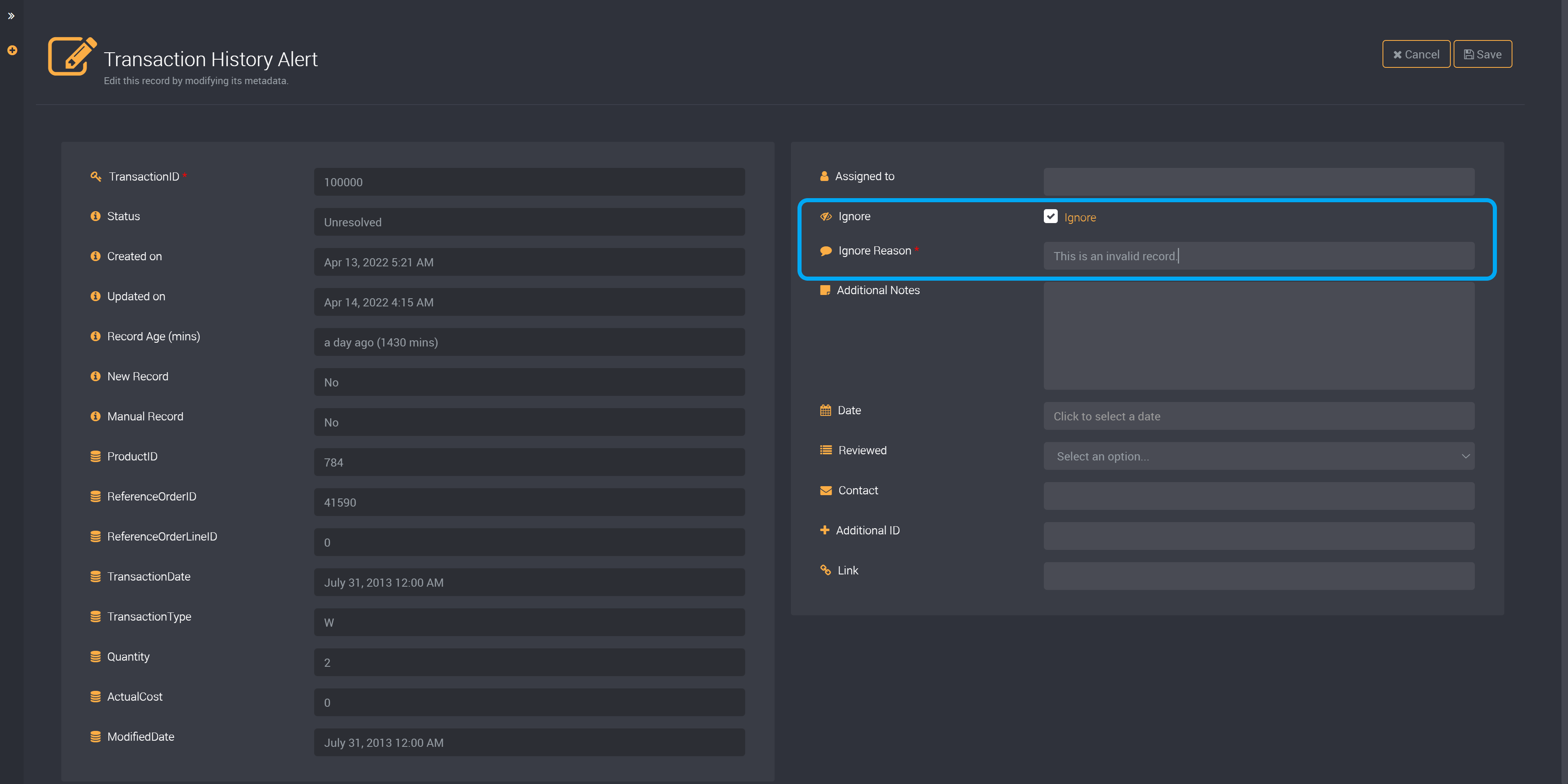
Save and this row will be ignored. It will not appear in the default view of results.
This row will be excluded for any future executions of this rule and so, will no longer be updated.
Edit your Custom Fields
Click on the Edit button of a row to edit any custom field you added when creating or editing a rule.
We have added each custom field type in the rule in the examples below.
Date
Select a date from the dropdown.
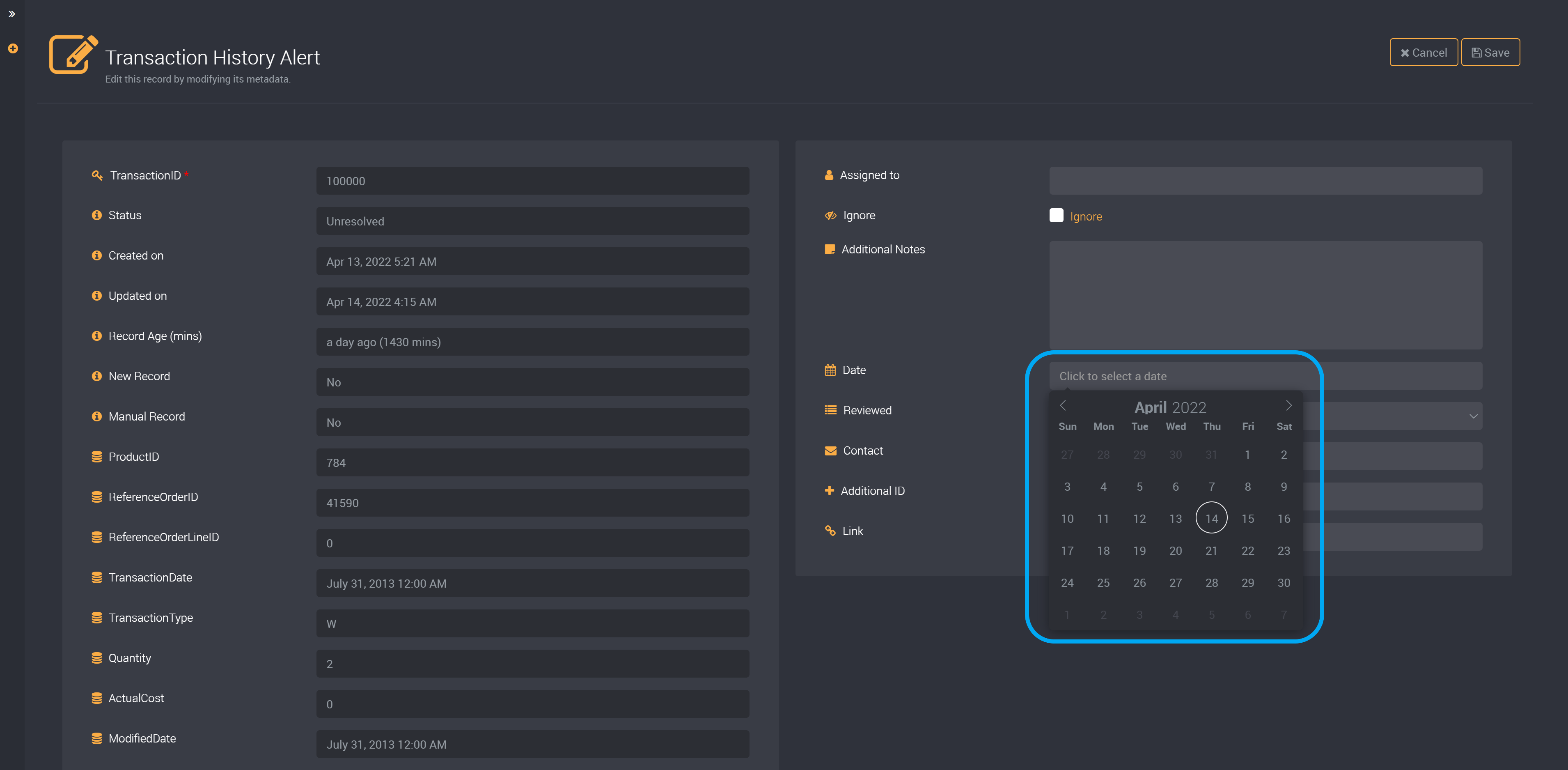
Notes/String
Provide values to your notes or string fields.

List
Select from your list options.

Number, Email, and URL
We have also added a number to the ‘Additional ID’ field, an email to ‘Contact’ and added a URL. Make sure to include ‘https://’ at the start of your URL.
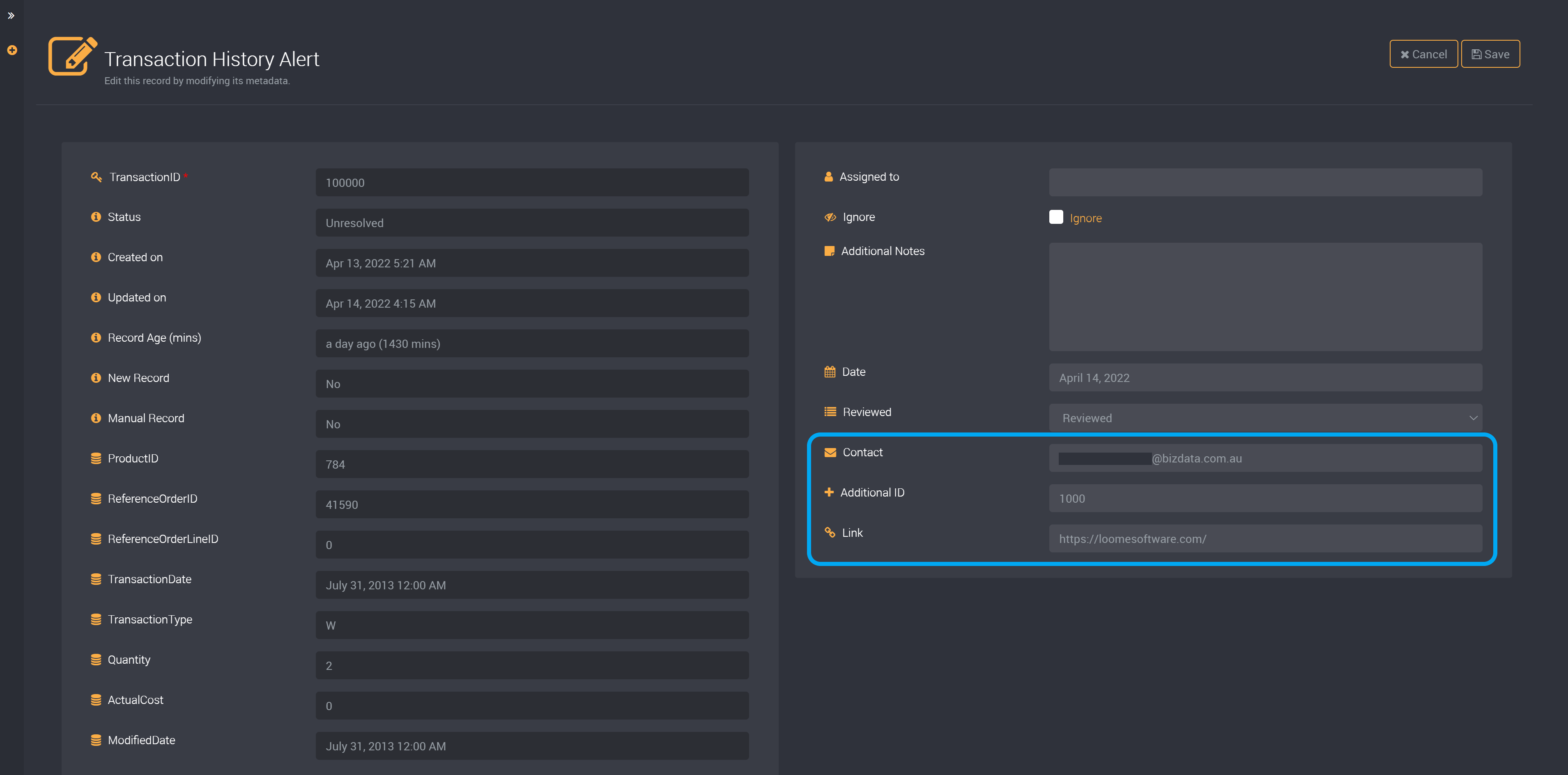
Boolean
You can choose from ‘True’ or ‘False’ from the boolean dropdown when editing a record.

Save your new changes.
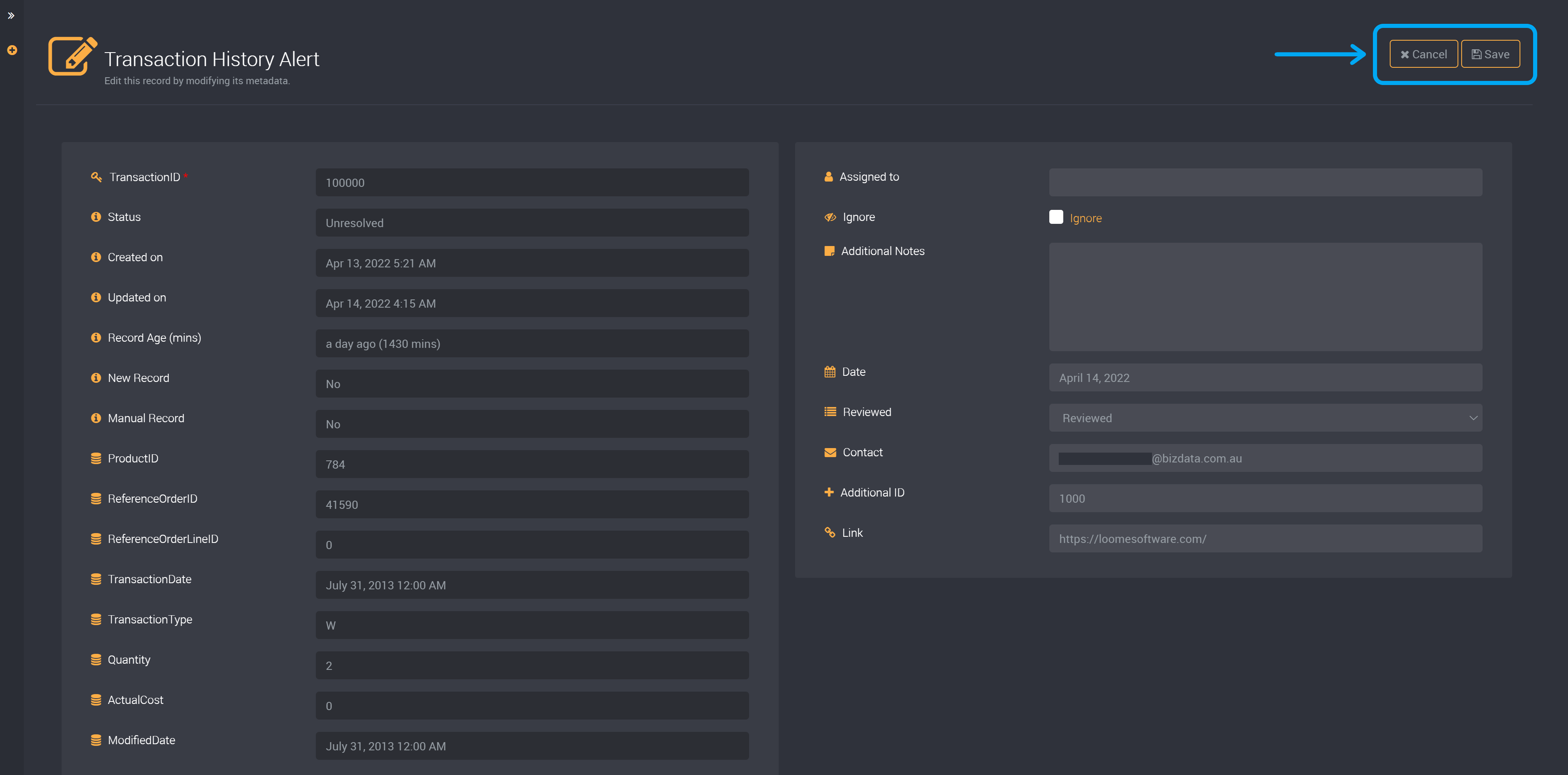
You will then be able to see these changes reflected in your results table.

For any custom fields, a dedicated schema has been created in your selected output connection with these custom fields as metadata columns.
When multiple users are viewing the same results page, if one user edits a row the page will be refreshed so that you can view the latest results. You will be notified if any rows are changed with the rule and row id, and the records will be updated.
You can cancel any changes you made to a record by using the Cancel button at the top right. You will lose any changes and you will be directed to the results page.
Custom Field Lockout Column
If you have selected a Custom Field Lockout Column while creating or editing this rule, whether you can edit a row depends on whether the lockout column is true or false.
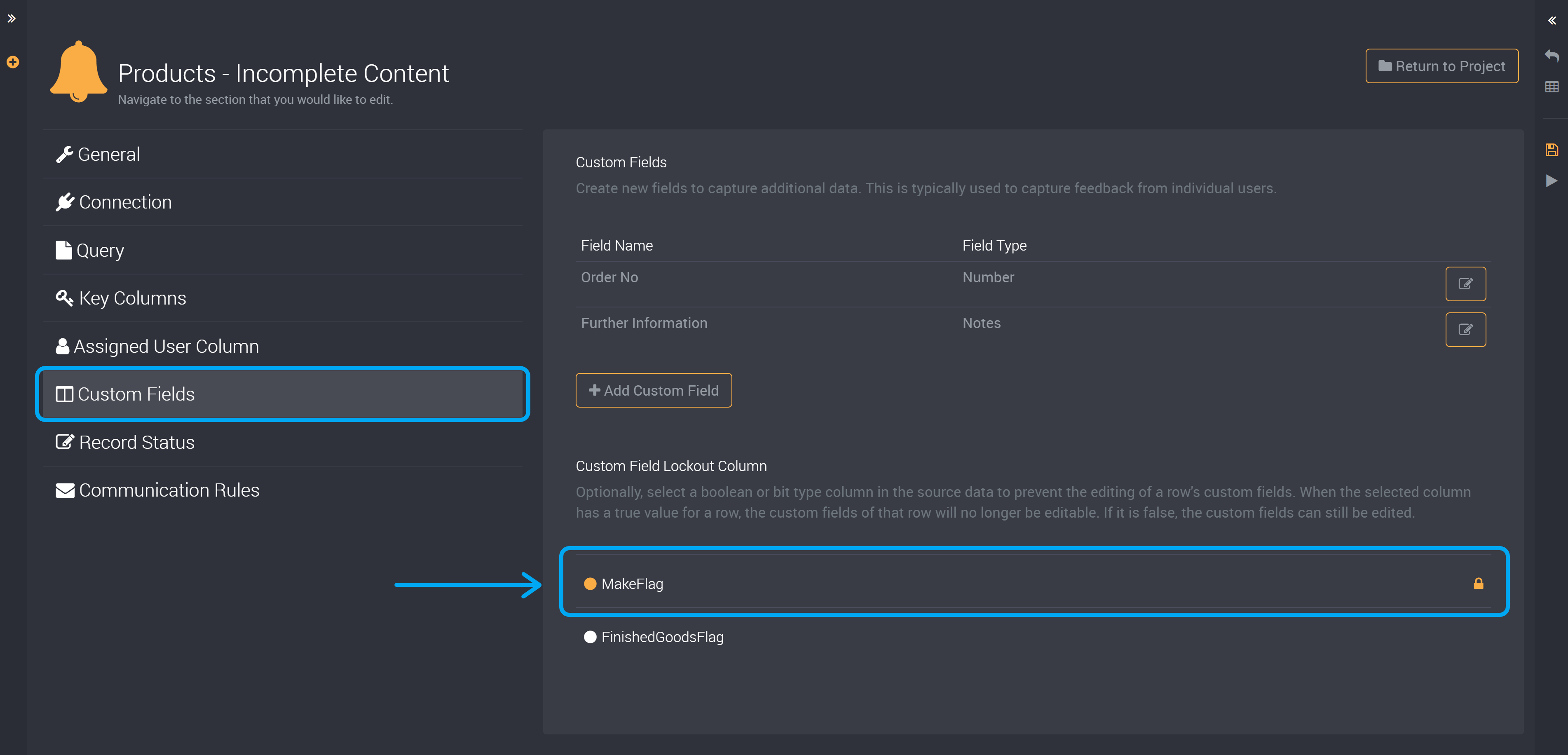
When a row has a true value in this column, the custom fields of the row cannot be edited.

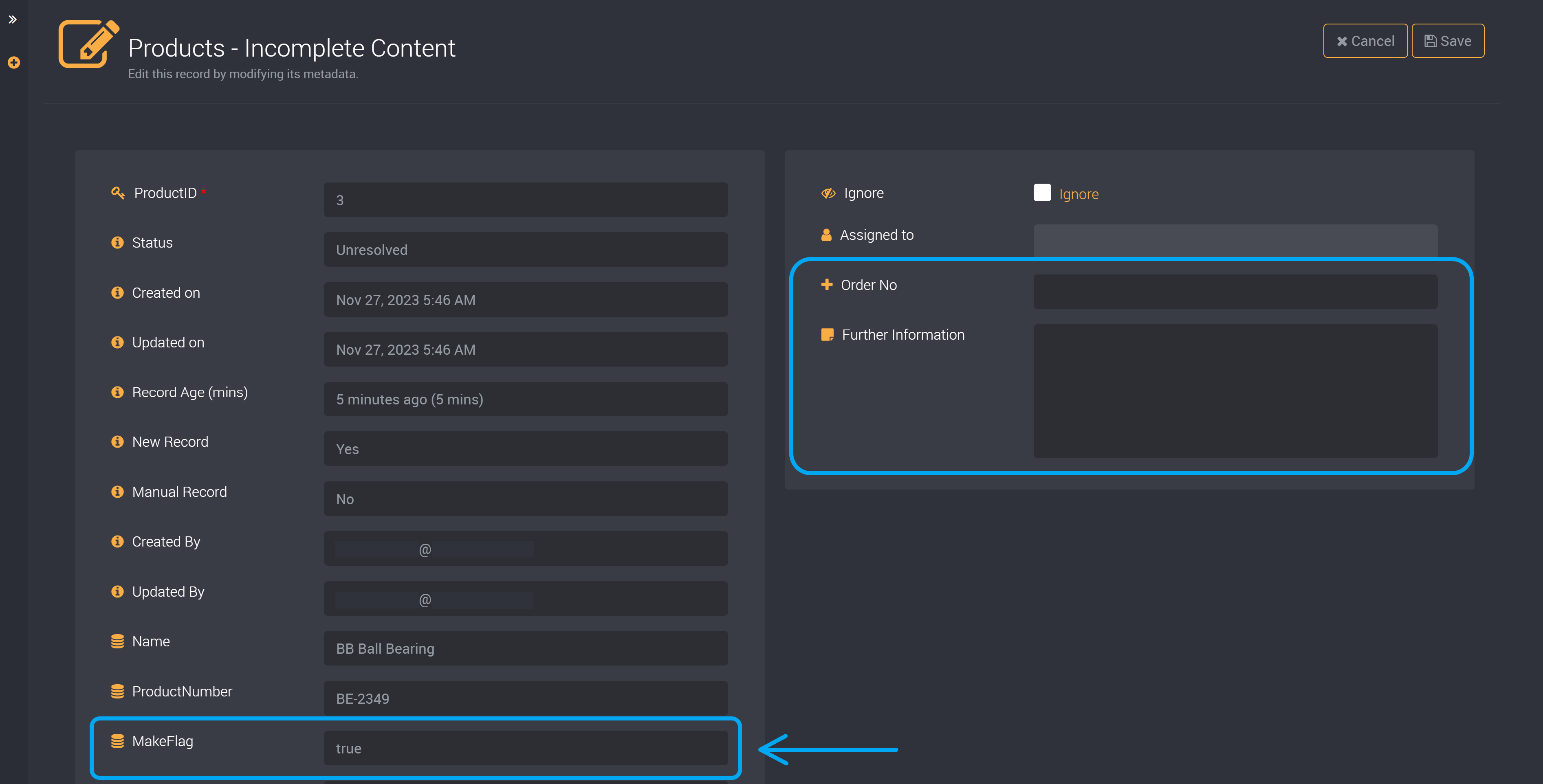
If it is a false value, the custom fields can be edited.
Edit your Rule
From this page you can edit the rule of these results by clicking on Edit in the top right corner. This will direct you to the rule editor and you can make your changes. Learn more about editing rules here.
